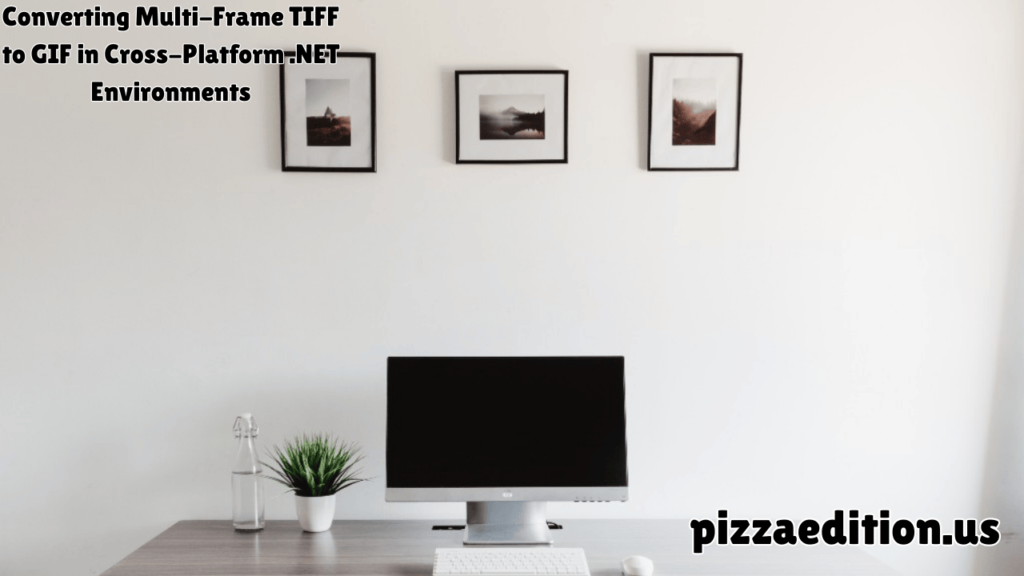In today’s digital world, image processing plays a significant role in various applications, especially when working with different file formats. One common challenge for developers is converting multi-frame TIFF files to GIF format, particularly in cross-platform .NET environments. The need for this conversion arises in various use cases such as animation, web design, or when integrating image formats for applications that need to operate on different operating systems like Windows, macOS, and Linux.
What is a Multi-Frame TIFF?
Multi-frame TIFF (Tagged Image File Format) is an image format that supports storing multiple images, or frames, within a single file. This feature makes TIFF especially useful in applications that require sequences of images, such as medical imaging, scanned documents, or animated files. Unlike standard single-frame TIFF files, multi-frame TIFF files allow for handling a sequence of images that can be individually manipulated or displayed together as part of a larger sequence, such as an animation.
Why Convert Multi-Frame TIFF to GIF?
GIF (Graphics Interchange Format) is a widely used image format, particularly known for its ability to support simple animations. It allows multiple images, stored in a sequence, to be shown one after another, creating an animated effect. Converting multi-frame TIFF files to GIF makes it easier to create animated images, which can be shared across different platforms and easily embedded in web applications. This conversion allows for streamlined workflows, especially when the goal is to create web-friendly, animated images that are compatible with various digital environments.
The Challenge of Converting Multi-Frame TIFF to GIF in Cross-Platform .NET Environments
One of the primary concerns when converting multi-frame TIFF to GIF in cross-platform environments is ensuring compatibility and performance across different operating systems. .NET Core and the latest versions of .NET (such as .NET 5+) have revolutionized how developers approach cross-platform development. These frameworks allow developers to create applications that can run on multiple platforms, including Windows, macOS, and Linux, without modification. However, when it comes to image processing, developers must carefully select the right tools and libraries that can handle the intricacies of these formats across various platforms.
Key Tools for Converting TIFF to GIF in .NET
To efficiently handle the conversion of multi-frame TIFF to GIF, developers need a reliable tool that supports both formats. .NET provides several libraries for image processing, each with its own strengths. Some libraries are designed to be lightweight and optimized for performance in .NET Core and .NET 5+ environments, ensuring developers can perform such conversions seamlessly while maintaining the speed and efficiency required by cross-platform applications. These tools are not only easy to integrate into your applications but also handle the complexities of multi-frame TIFF images, ensuring each frame is accurately converted into a GIF without losing quality or integrity.
Performance Considerations for Cross-Platform Conversion
When working with large TIFF files or multi-frame images, performance optimization becomes critical. TIFF files can be large and may contain several frames, which can result in high memory usage and processing time during conversion. In cross-platform environments, this becomes even more important as different platforms may have varying resource management capabilities. Developers must consider strategies like optimizing TIFF files, using efficient memory management techniques, and ensuring that the conversion process does not lead to performance degradation, especially in web applications or resource-constrained environments.
Conclusion
Converting multi-frame TIFF to GIF in cross-platform .NET environments is an essential task for developers working with images in today’s applications. By understanding the unique requirements of both the TIFF and GIF formats, as well as selecting the appropriate tools, developers can easily handle this conversion process, regardless of the platform. The ability to convert multi-frame TIFFs to GIFs allows developers to create dynamic and animated content that can be used across various digital and web environments, ultimately enhancing user experiences and broadening the scope of possible applications.
